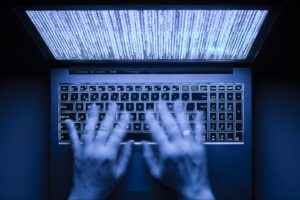Sustainability and green initiatives have grown in importance for businesses in recent years. Although firms are implementing many eco-friendly activities and policies, there is increasing pressure to take positive steps regarding technology and IT equipment.
Sustainability reports are considered the norm in many companies. With new patterns of remote or hybrid working, green companies, however, strive to do more by sourcing eco-friendly products, identifying energy-efficient equipment (and processes), and investing in renewable energy.
But online security is another significant area that many organizations miss.
As companies expand and become more collaborative and connected through technology, their critical systems must stay secure. Can this strategy truly be considered energy-efficient?
Related: A Job in This Industry Is Not Only In Demand in 2023 — Our Future Depends on It
How much energy your technology drains
Energy consumption by IT equipment, computers, servers, and thousands of other IoT (Internet of Things) devices is notoriously lacking in measurable data. A whitepaper by The Shift Project summarized that digital technologies are essential in the global effort to end dependence on fossil fuels. But the energy impact of this growing use could cause a ‘net increase’ in sectors’ carbon footprint.
It’s almost impossible to estimate every device’s usage as it pertains to a company’s energy-preservation efforts. Even more challenging is the challenge of estimating the electricity consumed in securing devices, networks, and systems. In addition, you will also need to calculate the energy costs in protecting a business’ IT equipment from cyber-attacks.
Tech experts will usually be the first to highlight how energy-efficient modern digital devices and systems are within a company. Meanwhile, there is a counterargument that argues that the IT industry’s share of energy use is steep, producing total emission levels similar to that of global transport.
Despite the evidence that IT and cybersecurity cannot be considered 100% green and renewable, it’s only fair to applaud the industry’s efforts at finding renewable sources to use. Modern digital technology can optimize how more energy-intensive activities can be conducted.
Safeguarding your cybersecurity
It’s easy to overlook the amount of energy used when using essential devices, appliances, and systems every day, whether for work, school, or personal enjoyment.
All of these everyday devices emit energy, including mobile phones, computers, boilers, washing machines, lights or heating systems, and the reality is, all of these devices are necessary. These devices’ adequate and appropriate protection is also crucial and fundamental for their successful operation and synchronicity.
The risk of cyber threats has only grown in scale and severity over the years. Cyberthreats range from financial crime, ransomware, DDoS (distributed denial of service), and malware to hacking secure networks and systems to gain access to sensitive information.
The threat landscape remains volatile for companies across all industries, and, ironically, the energy industry is particularly susceptible. Cybercriminals may be financially, economically, or politically motivated, with attacks severely disrupting activities. Not just daily activities and operations, but long-term strategic ones, too.
Recently the cybersecurity firm Redscan surveyed 180 CFOs, CEOs, and other financial executives worldwide about cybersecurity. The results showed an ‘overconfidence’ around cyber risks, according to Mark Nicholls, Chief Research Officer of Redscan.
“Almost 87% of the surveyed executives expressed this confidence, yet 61% of them had suffered at least three significant cyber incidents in the previous 18 months,” he said.
Companies that are taking steps to improve global energy efficiency might be severely stunted if they do not implement proper security controls to protect networks and infrastructure.
Simply ignoring cybersecurity is not an option, so what can businesses do to make sure this requirement is addressed in a way that doesn’t prohibit their energy preservation?
Enhancing energy efficiency through tech
Investing in environmentally friendly technology is one of the most effective ways a business can save more energy. This can range from small changes such as LED lighting, green switches, and smart heating controls to large-scale systems like wind turbines, solar panels, geothermal heating, or water conservation plans.
Establishing widespread use of energy-efficient technologies requires companies to be mindful of future cyber needs. Building owners will likely need to upgrade IT infrastructure to accommodate modern safeguarding, so they must be supported to ensure all changes are handled with excellent care and consideration for preserving energy.
